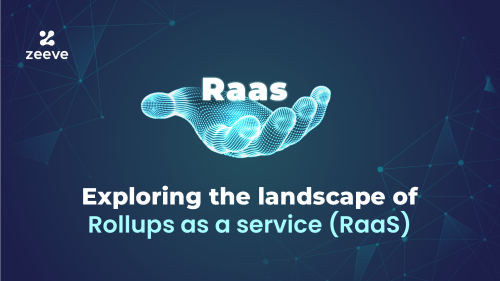
A Deep Dive into Rollups-as-a-service (RaaS)
There has been a great buzz around Rollups-as-a-service in the blockchain space. That’s because RaaS empowers web3 enterprises to easily build Rollups chains with increased transaction speed and lower costs. Further, Rollup-as-a-service platforms do not require heavy infrastructure and extensive resources to launch Rollups; instead, they offer a quick build and deployment approach through Rollup SDKs and plug-n-play tools.
As we know, the blockchain space is hampered by the biggest trilemma— scalability. For example, we have witnessed the situation of the Crypto Kitties congestion crisis that occurred due to over 2-4 billion transactions occurring in a single day, which led to the freezing of 30,000 transactions. Now that the demand for innovative decentralized applications (dApps)is growing significantly, this scalability issue of Layer-1 blockchains becomes a barrier to adoption.
That’s why Layer-2 scaling solutions– Rollups existed and they are now rising in demand. Knowing this, numerous web3 infrastructure providers have started offering Rollups-as-a-service, simplifying the creation, deployment, and management of Rollup-based chains. Let’s dive deeper into the Rollups-as-a-service (Raas) concept to understand its advantages, types, working mechanism, use cases, and more.
However, to understand Rollups-as-a-service, you must be familiar with the concept of Layer-1 and Layer-2 blockchains and AppChains. If you want to learn about these concepts, read our all-inclusive guide below:
Also Read: Comprehensive Guide on Layer 2, Sidechains and AppChains
Understanding Rollups and Its Advantages
Rollups are the scaling solution designed to tackle the scalability issues of Layer-1 blockchain networks, enabling a faster, cheaper, and highly sustainable blockchain ecosystem for dApps. Rollups process the bulk of blockchain transactions on a separate faster network (Layer-2s), bundle the transactions into a single rollup, and then port the bundled transactions back on the main blockchain (Layer-1) at a minimal gas fee cost.

This approach of computing transactions off-chain could be beneficial for a lot of web3 applications in many ways. For example, it increases the transactions throughput capacity of the parent chain, and provides a more economical and sustainable ecosystem for dApp development while maintaining a high degree of security and full decentralization on Layer-2 by inheriting the security from the main Layer-1 chain.
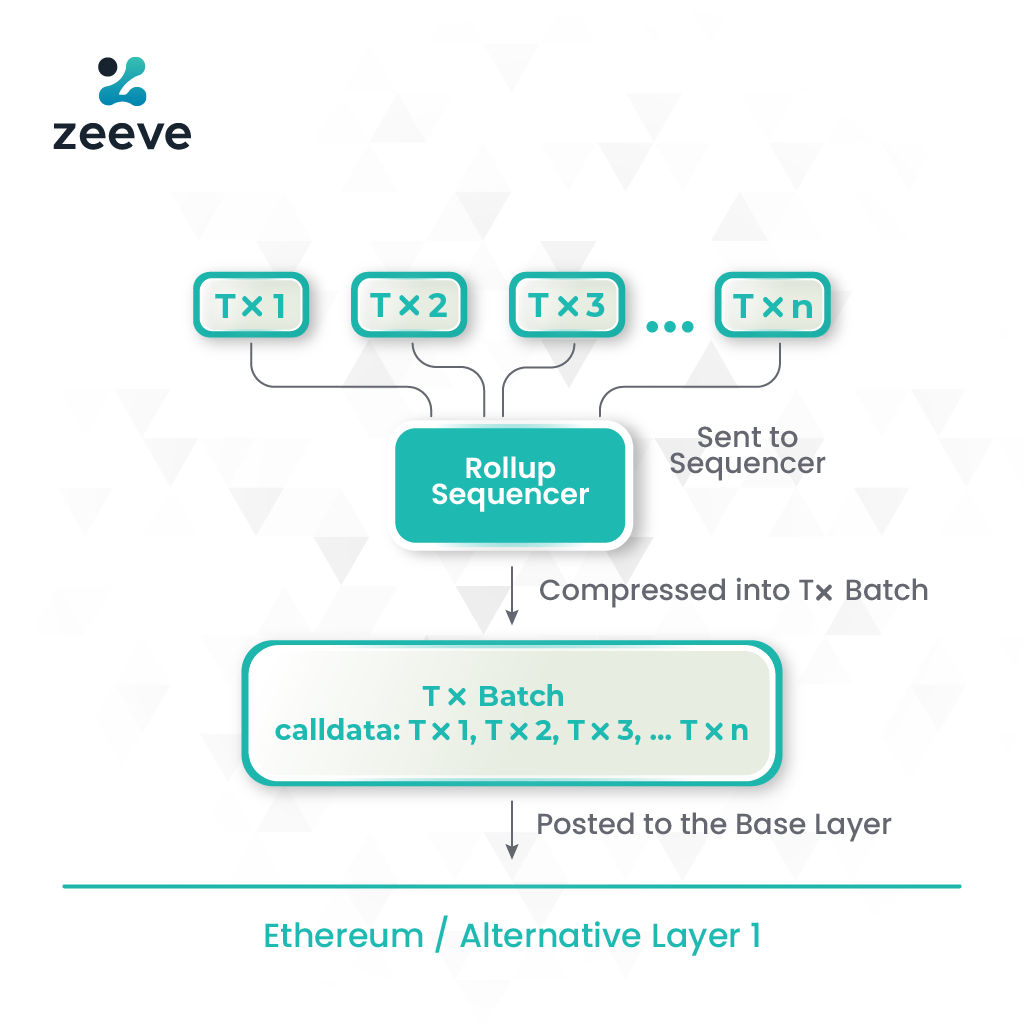
Polygon zkEVM, zkSync, and Scroll are the top projects offering Rollups to scale Layer-1 blockchains. Most Rollup solutions are Ethereum-compatible, allowing seamless integration with existing dApps and smart contracts.
What is Rollups-as-a-Service (RaaS)?
Rollups-as-a-Service (RaaS) is a comprehensive stack that allows web3 enterprises and dApp projects to build, deploy, and maintain their customized, production-grade Rollup chains and AppRollups (application-specific Rollups) in a less complex and hassle-free way.
RaaS essentially provides an abstraction layer over the complex approach of launching Rollups using SDKs and frameworks. RaaS works similarly to software-as-a-service products that do not require users to manage complex hardware and software infrastructure or need hosting of any service on their end.
Likewise, rollup-as-a-service products are created to eliminate the complexities of building AppRollups from scratch using SDKs and frameworks, which include infrastructure management, operating nodes, or programming heavy codes. Instead, developers are provided with a dashboard-like platform and advanced tooling that enable the launch of custom Rollups within a few clicks with no reliance on intensive engineering or gathering technical expertise about complicated Rollups stack.
Types of Rollups-as-a-Service (RaaS)
There are two main types of Rollups-as-a-Service — Optimistic rollups and ZK-Rollups that are widely adopted by blockchain projects. Both these Rollups offer unique benefits, hence, enterprises can choose one that aligns perfectly with their project requirements.
Optimistic Raas refers to the stack that Layer-1, L2, and Appchains use to implement Optimistic Rollup on their blockchain ecosystem. Transactions in the case of Optimistic are processed on a separate Layer-2 network, and then batched transactions are submitted to Ethereum or Layer-1 mainnet, assuming that the transactions are valid. Here, two parties are involved– one that submits the rolled-up transaction on mainnet and another that submits fraud-proof for those transactions. Both these parties have their token staked on the main network. If any invalid transactions are spotted, a dispute resolution will be conducted using their tokens. However, the chances of invalid transactions are rare in Optimistic Rollup since it adopts a dual-validation model. Popular optimistic rollup solutions are Arbitrum, Optimism, and Boba network.
ZK-Raas refers to a solution that allows the implementation of zkRollups for blockchains and AppChains. Unlike Optimistic, zkRollups does not offer a dispute resolution mechanism. Instead, it is based on advanced cryptography technology— Zero-Knowledge proofs. Within this model, the batches of rolled-up transactions include a cryptographic proof called SNARK ( Succinct Non-Interactive Argument of Knowledge ), which is undertaken and verified by contract deployed on the main L1 blockchain. This means that a validity proof of transactions must be submitted on the main network, making Rollups quicker and more efficient. Prominent zero-knowledge rollup solutions are Polygon Hermez, Starkware, zkSync, and Loopring.
How Does Rollups-as-a-Service Work?
RaaS offers a complete set of scaling services that allows web3 developers to create and implement custom Rollups. Following is a simplified overview of how Rollups-as-a-Service typically works:
- Projects onboarding: Web3 projects can quickly sign up with a RaaS platform and gain access to their complete stack of SDKs, templates, and plug-n-play tools.
- Customization: Rollupus-as-a-service platform supports full customization of Rollups chains based on project’s specific needs. Customization can include adjusting the security parameters, increasing the transaction processing capacity, setting transaction fees, and modifying the performance standards.
- Integration of tools and frameworks: Rollups-as-a-service platforms allow for seamless integration tools, libraries, and SDKs that web3 projects can use within their dApps or Rollup-based networks.
- Monitoring and Maintenance: RaaS providers offer monitoring and maintenance services to ensure the optimal performance and security of the Rollup solution.
- Scaling and upgrade: As a project expands, RaaS platforms allow developers to scale the Rollup network according to the changing requirements.
How Web3 Projects Can Utilize Rollups-as-a-Service
Web3 projects can leverage RaaS in a variety of ways to increase transaction processing speed, reduce network congestion, and thereby, increase the overall efficiency of their blockchains, applications, and services.
Application to Layer-1 and Layer-2 Networks
Many Layer-1 blockchain networks, including Ethereum, are actively exploring Rollup solutions to improve scalability. Ethereum web3 projects can utilize Rollups-as-a-service stack to seamlessly launch their custom Rollups-based applications without the heavy lifting of infrastructure management and getting the components such as nodes, wallets, explorers, etc. If not Rollups, these projects have to migrate to any Layer-2 network to improve speed and performance, which requires cost, time, effort, and advanced tooling & infrastructure. Similarly to Layer-1, Layer-2 blockchains can use RaaS to build and implement use case-specific Rollups and operate it as Layer-3 chain to process and validate transactions off-chain and send them to L2 mainnet.
Alternative to Application-specific blockchains
As we know, AppChains or Application-Specific Blockchains are standalone blockchains that manage large dApps on their ecosystem instead of sharing infrastructure with multiple dApps. While AppChains are a great way to achieve scalability, they may not be viable for every web3 project due to cost, infrastructure management, etc. Such dApps can instead launch Rollups for their network’s ecosystem using Rollups-as-a-service platforms with access to high-end developer tools, plugins, and ready-to-use frameworks. However, web3 projects should do a detailed analysis of whether they need Rollups or an AppChain ecosystem. The comparison can be done on various parameters such as TPS, decentralization, interoperability requirements, customization, and cost-effectiveness.
Rollups implementation for existing web3 projects
Large Gaming and non-fungible token (NFT) projects that manage millions of active users may face scalability issues due to increasing network congestion and huge transaction processing. These projects can launch Rollups-based custom chains and migrate from their existing infrastructure, achieving high transaction speed, congestion-free environment, and highly secure infrastructure. Again, launching Rollups-based chains becomes easy for NFT and gaming web3 projects with Rollups-as-a-service platforms with ready-to-use stack, tools, and Rollups SDKs.
How Zeeve can help you launch your Rollup Chain?
With Zeeve’s Rollups-as-a-service platform, enterprises, web3 projects, and independent developers can launch the application-specific Rollup rapidly and at a fraction of cost. Let’s learn more about the core RaaS offerings of Zeeve:
Generic and Application-specific Rollups
Zeeve’s Rollups-as-a-Service platform, supports all kinds of Rollups implementations for Layer-1 blockchain scaling. For example, you can launch generic rollups like Optimistic Rollup, zkEVM, zkSync2.0, and application-specific Rollup such as zkBNB easily. Zeeve utilizes the ready-to-use frameworks, templates, and modules to launch generic Rollups. Whereas we offer a wizard-based configuration panel, customizable modules, and templates— allowing each project to get a custom Rollup chain matching their use-case standards. Further, Zeeve facilitates seamless migration of your blockchain infrastructure to a Rollup-based ecosystem. Here also, you can choose between generic and application-specific Rollups implementation.
Quick development and launch
Zeeve takes away the pain of launching custom application-specific Rollups with its enterprise-grade infrastructure backed with Enterprise SLA and industry-leading security. Zeeve simplifies most of the steps involved in launching Rollup chains. For example, Zeeve platform gives you access to scalable nodes, dedicated APIs or indexers to retrieve blockchain data and use flexible cloud deployment options.This way, Zeeve ensures quick build and launch of Rollup chains. Also, this approach rescues the deployment cost considerably. Plus, the Rollup Infrastructure provided by Zeeve is highly configurable and is backed with a wide array of tools, plugins, and components like Data Indexing Protocols, block explorers, testnet faucets, scalable nodes, cross-chain bridges, and faucets– enabling seamless launch of different Rollups.
24×7 Monitoring & alerts for Rollups chains
Zeeve monitors all your Rollup chains on critical parameters, maintaining 99.99% uptime, excellent network performance, and scalability. For this, Zeeve offers a graphical, real-time dashboard showing the performance of your Rollup chain with details like uptime, disk usage, storage running out, current block height, etc. Zeeve guarantees the reliability of its Rollups-as-a-service offering with ISO 27001 and SOC 2 Type 2 compliance and enterprise-level SLA.
If you are planning to build a Rollup-based chain or you want to implement Rollups into your existing web3 project, our expert team of Rollups and Devops are happy to assist! Also, you can discuss your project requirements with our web3 consultants via one-to-one call. For more information on how Zeeve simplifies the launch of Rolllupchains, Appchains, and other web3 projects, contact us.


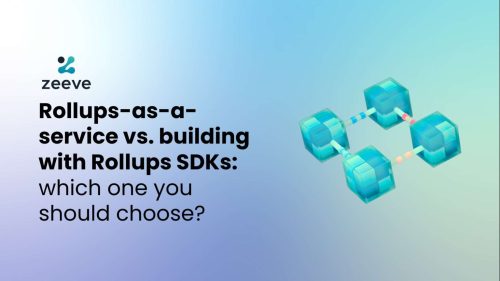
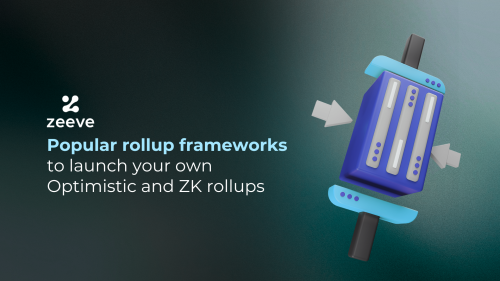

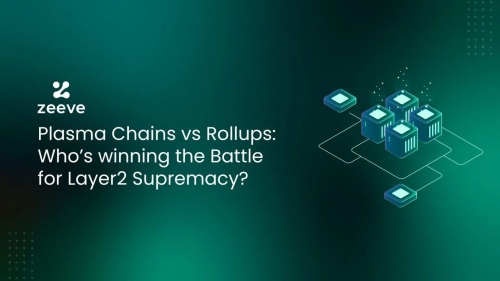
Responses